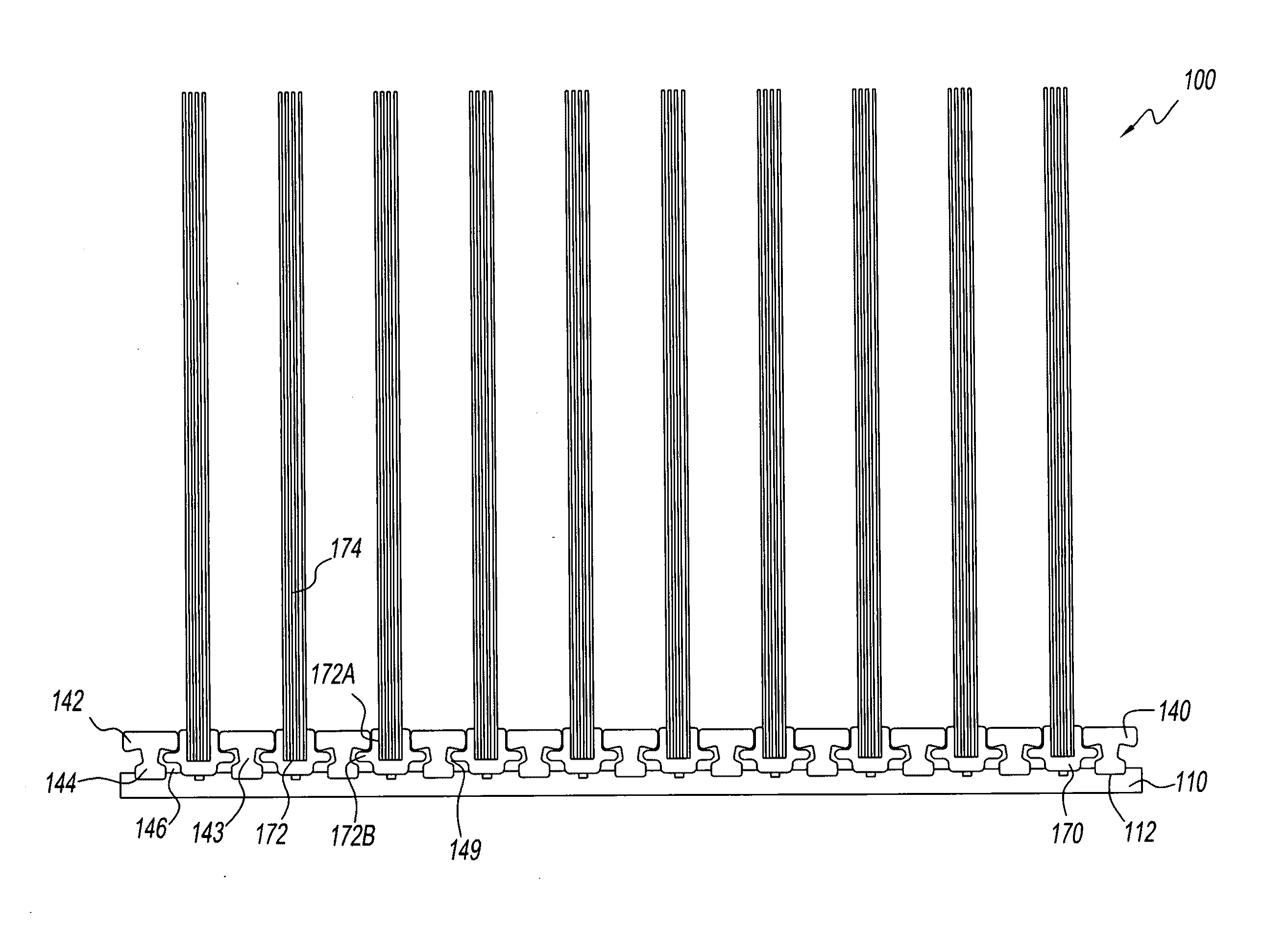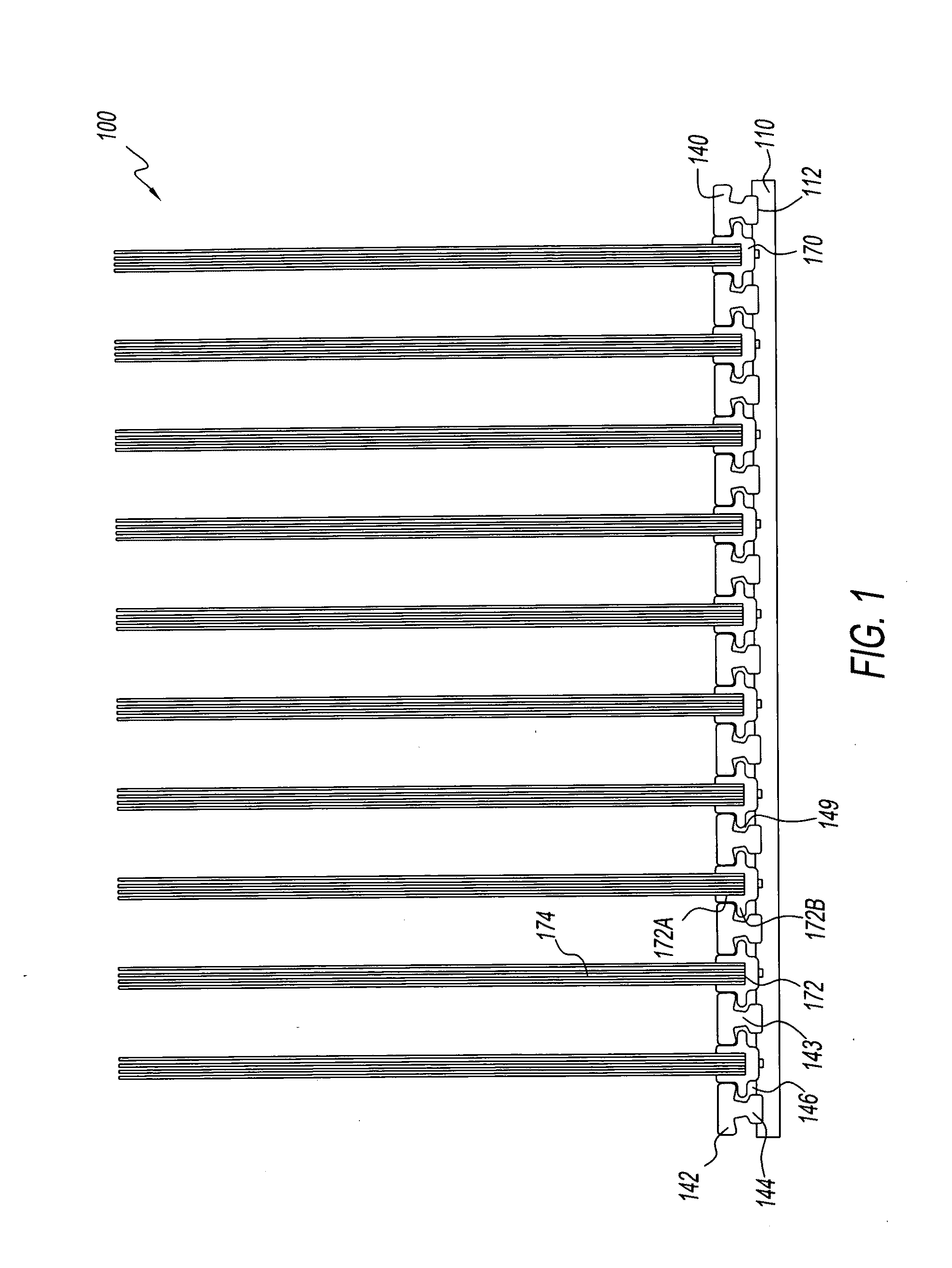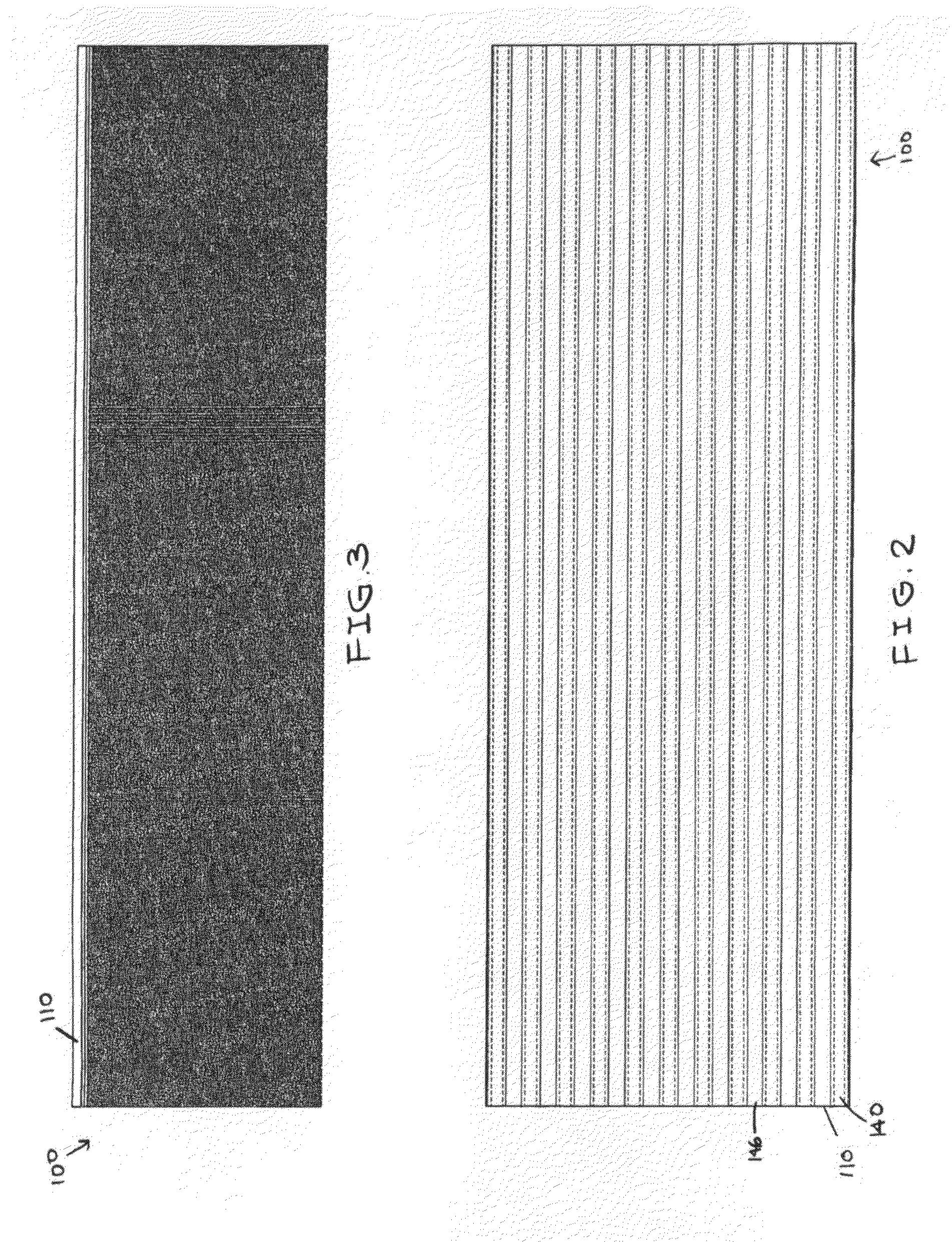Customizable modular brush system and method thereof
a modular brush and custom design technology, applied in the field of custom design modular brush systems and methods thereof, can solve the problems of inability to readily adapt brushes used in one industry to use in another industry, inability to readily benefit from the reduced cost savings resulting from mass production, and inability to purchase brushes for a particular industry or application from limited sources, etc., to achieve efficient, quick and easy customization of each modular component, and different widths.
- Summary
- Abstract
- Description
- Claims
- Application Information
AI Technical Summary
Benefits of technology
Problems solved by technology
Method used
Image
Examples
Embodiment Construction
[0037]With reference to the drawings, wherein the same reference number indicates the same element throughout, there is shown in FIGS. 1-3 a brush 100 of the present invention. The brush 100 comprises a base 110, a plurality of rails 140 and a plurality of strip brush elements 170, all of which may be made of a thermoplastic or thermoset material. Each of these components, base 110, rail 140 and strip brush element 170, may be extruded, molded, or otherwise produced by methods known to one skilled in the art.
[0038]As shown in FIGS. 1-3, base 110 has a planar rectangular shape with a plurality of spaced apart and longitudinal grooves 112 on its surface. Grooves 112 are formed on the base 110 by cutting, carving, grounding, etching or milling. The density of the grooves 112 can be customized to the specific application or use. A plurality of elongated rails 140 are fastened, spaced apart and longitudinally, in the grooves 112 of the base 100 by means known to one skilled in the art, b...
PUM
 Login to View More
Login to View More Abstract
Description
Claims
Application Information
 Login to View More
Login to View More - R&D
- Intellectual Property
- Life Sciences
- Materials
- Tech Scout
- Unparalleled Data Quality
- Higher Quality Content
- 60% Fewer Hallucinations
Browse by: Latest US Patents, China's latest patents, Technical Efficacy Thesaurus, Application Domain, Technology Topic, Popular Technical Reports.
© 2025 PatSnap. All rights reserved.Legal|Privacy policy|Modern Slavery Act Transparency Statement|Sitemap|About US| Contact US: help@patsnap.com



